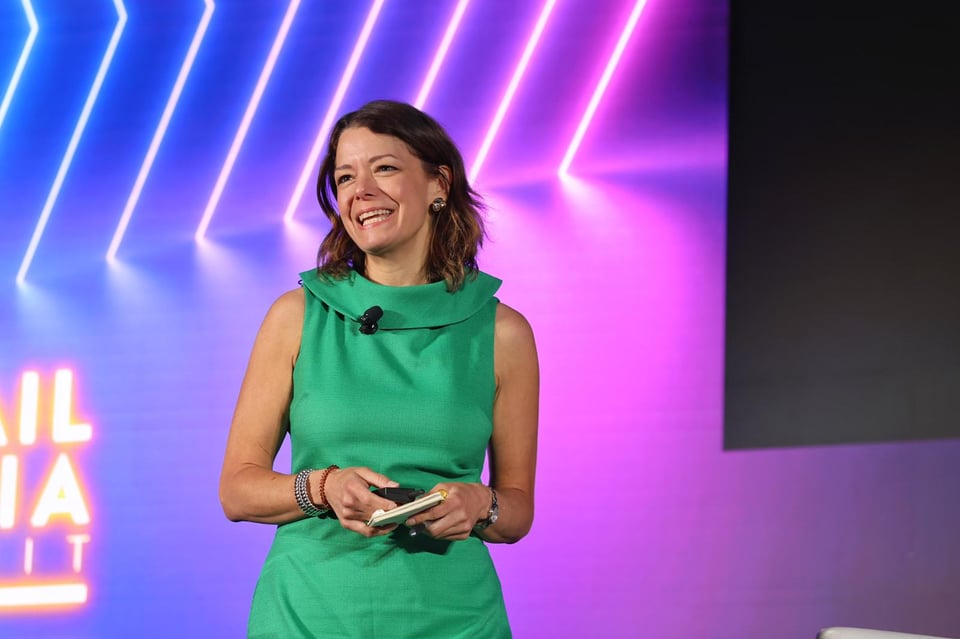The single biggest growth opportunity for your brand might be opening a third-party seller account.
More and more brands (including some of my clients) are seeing significant sales uptick by transitioning to a “hybrid” model to address a variety of challenges on Amazon – persistent out of stocks/inventory management, circumventing Amazon’s aggressive price matching strategy, a means to manage products requiring special handling, getting more direct access to their customers, and to keep selling their CRaP on Amazon (no, it’s not potty talk – if you don’t already know about CRaP, see my
previous article).
In addition, this approach gives brands negotiation leverage by allowing you alternative ways to sell your products on Amazon.
In this article, I will cover how hybrid models can help your brand achieve incremental growth. I will also cover Amazon’s different fulfillment models, the types of products/brands that typically fit best in each model, the pros and cons of this approach, and how to get started.
Why would a brand do this? One Amazon account seems like enough!
Big shocker – there are a few types of products that just don’t fit well in Amazon’s retail channel. Here they are:
- Products with unstable supply chains, seasonal products: Amazon is likely to over-order, leading to markdowns, or frequently be out of stock
- Items with high damage, return, or customer service (CS) contact rates, or items requiring significant prep to ship to consumers: It is difficult for Amazon to customize it’s supply chain to remedy these
- New products/brands: Amazon has very little forecasting data to work with, leading to poor forecasts
- Product types Amazon doesn’t carry in their Retail business: Refrigerated or frozen items; chocolate in summer months
- CRaP (Can’t Realize any Profit): Items that are structurally unprofitable in the Ecommerce model
It’s true, managing a relationship with Amazon (or their robots) is time-consuming. However, let’s say you have a retail relationship with Amazon. Maybe they have trouble staying in stock on your products, and your growth is suffering. Or let’s say you’re about to launch something new, but they aren’t willing to buy enough (or any of it) to support the launch, much to the dismay of your Marketing department. Perhaps you have a catalog with a long tail, and Amazon won’t stock the tail. Or lastly, and unfortunately most commonly, Amazon quietly stops ordering the items that are unprofitable for them (i.e.,
CRaP), and your growth begins a slow decline.
The bottom line is that
your customer demand on Amazon is leaky! Here is a graphical illustration of why one fulfillment model is not enough on Amazon – stay with me here, I’ll explain:
The top, blue line, is the organic (or “Gross”) demand for all of your product on Amazon. Completely un-throttled, this is the demand you’d realize if Amazon was in stock all of the time and you didn’t have any
CRaP items.
However, it takes Amazon awhile post-product launch to get in stock, and stay in stock, on your products. Or maybe they never stocked them all to begin with – either not enough data, or they weren’t interested. Or maybe they are just having trouble keeping up with your demand. That’s the red curved line – the demand you actually realize on the
instock product.
Lastly, it only takes Amazon a little while (a few shipments, in fact) to realize which items are
CRaP. Once they can properly identify these items, at a minimum, they’ll prevent
you from marketing them
and they’ll suppress them from their automated marketing, which significantly impacts your brand’s growth. Worse case, they stop ordering them from you, too…which also (obviously) throttles your demand.
Therefore, your net demand (accounting for Amazon out of stocks and
CRaP suppression),
is the lower, red line. Over time, this demand flat lines, and, depending on how bad the two aforementioned problems are, begins a slow decline.
(It is worth noting that there is possibly a third form of demand throttling, which is Amazon’s launch of your products as private label…but that’s a different article.)
But
someone is still capturing this demand, and it’s all of the third-party sellers! They are smart. They list products that customers want. They often buy or build software to help them
find your products that are struggling in Amazon’s retail network.
Whaaaaat? I want all of that demand, too! Sign me up.
Hold it there, partner. First, let’s make sure you understand all of Amazon’s fulfillment models.
Fulfilled-by-Amazon Relationship (FBA) – also known as “FBA” or “2P” – You own your own products, but you conveniently rent space in Amazon’s fulfillment centers.
You also get access to Subscribe & Save. This type of relationship requires Amazon to be interested in your brand, and you must negotiate with them. They also get all of the control (which is good and bad) – they set the retail prices, so you get the benefit of their sophisticated price matching algorithm keeping your pricing sharp. They also decide how much, and when, to order.
This model is best for brands that fit well, and profitably for both parties, into Amazon’s retail channel, and brands who desire (or do not mind) taking advantage of Amazon price-matching and forecasting systems.
Retail Relationship – also known as “Direct”, “Retail”, or “1P” – Amazon will buy your products from you, store them in their warehouses, and ship them out to customers. Your items will be eligible for Prime Shipping and Free Shipping, and oftentimes Same Day Shipping or Prime Now, for consumers.
You also pay a cut of the sale (called a “referral” fee.) Amazon handles shipping the product to consumers, so having direct-to-consumer fulfillment capabilities is not required for your brand. Your items are also eligible for Prime Shipping and Free Shipping, and oftentimes Same Day Shipping. Subscribe & Save is more limited. You can also list, and stock, whatever items you like. What you gain in this model is some control, of both pricing (you set and manage your retail pricing) and inventory (you decide what to send to Amazon and how much.)
This model is best for brands seeking to set their own retail prices (sometimes to circumvent Amazon’s aggressive price matching to online competitors), for new product/brand launches, and as backup supply model.
Third-Party (non-FBA) Merchant – Also known as “3P” or “Merchant-Fulfilled Network (MFN)” – You own your products, and ship them to end consumers, period. Your products never see Amazon’s fulfillment centers.
Someone pays for the shipping – either you mark up your retail prices to cover it, or you pass it onto the consumer in the form of a shipping charge. Items are not eligible for Prime or Free Shipping. You choose what to list, how to ship, and you pay Amazon a “referral fee” on the sale.
Because conversion on these items are typically lower than in Retail or FBA models, this model is best for brands whose items require special handling or are made-to-order
Drop Ship – Also known as “direct-to-consumer” or “Direct Fulfillment” – Amazon engages with you similarly to the 1P (Retail) model – you negotiate with them, and they decide what items to carry and how to price them to consumers. However, you ship it out of your own fulfillment center to the end consumer (using their carrier rate cards – big cost savings) in an unbranded box, using an Amazon-provided packing slip. The idea is that the customer doesn’t realize it didn’t come from Amazon. Items are eligible for Free Shipping, but usually don’t carry the Prime 2-Day delivery promise. The vendor is able to set their lead times to suit the nature of their business (i.e., can’t ship on weekends, etc.)
This model is best for brands with prolific assortment that Amazon would find unreasonable to stock (think hundreds of patterns of seat cushions) or with big/bulky items where direct-to-consumer shipping can provide cost savings (large sporting equipment, etc.)
Okay, I get it…now can I sign up?
First, you might want to know about the drawbacks of this hybrid model. Here they are:
This will be kind of a pain.
Managing one Amazon account is hard. Managing two or three different accounts, portals, pricing, and inventory might make your college-level Calculus class seem like a cakewalk. You’ll likely have to add a person or two to your team to keep track of it. Or hire a broker.
Your margins might look different (unfortunately sometimes lower) on the FBA sales (versus Retail sales)
The economics of FBA are often different for brands, compared with their retail business with Amazon – and sometimes, worse. Brands control their economics, because you set your retail prices (higher retail prices = higher profit for you). However, if we’re talking about products that
Amazon can’t ship profitably to customers, you might also have a hard time making money at market prices. For example, a $15 retail price for a tube of toothpaste might cover everyone’s costs, but it is not a reasonable price for toothpaste, and henceforth, no one will buy it. Also, since you are now the seller, and this is communicated to the customer “ships and sold by [insert name of toothpaste brand]”, it could reflect poorly on your brand.
However, if your options are FBA or not selling on Amazon at all (due to Amazon’s
CRaP restrictions), some margin is better than no margin…
Amazon might be unhappy…or at least, this approach is somewhat controversial.
Whether Amazon decides to get involved in your decision to sell hybrid will depend a lot on why you are trying to do it. For example, if you think Amazon is pricing your products too high, and you list the items yourself via FBA with lower prices (in the hopes that Amazon will match the price on your retail offers), that’s probably going to raise some eyebrows. If Amazon really wants all of your assortment in their retail business, but you’re holding some back for whatever reason, and then list those held-back items in FBA, they are likely to be similarly dissatisfied.
On the other hand, if Amazon is struggling with your
CRaP, isn’t willing to stock your long tail, struggles to stay in stock in general, or simply can’t carry your products (special handling), you’re likely to be met with less resistance.
In the case of
CRaP specifically, Amazon might prefer it. Let’s play it forward from Amazon’s perspective – If you have a product that doesn’t fit well in the retail channel, chances are Amazon isn’t going to sell it via Retail for very long. But someone will sell it. If
you (the brand) aren’t the FBA seller that subsequently lists it, it will be another seller, because (as mentioned previously,) sellers are smart – they will find your items that are struggling. These sellers may provide a sub-par customer experience (think typos and inaccurate product information, duplicate listings, outdated images/packaging, and poor response to customer Q&A). Additionally, they will often have higher, or at least less educated, retail prices – which means lower sales and a worse customer experience for Amazon’s customers. Does Amazon want that? I think they don’t.
Therefore, in order to have Earth’s Largest Selection, and be a destination for rich, accurate product information, Amazon needs you! While your buyer might be unhappy with your choices (less retail revenue for them), provided your intentions are sound and in everyone’s best interest, I suggest you push upward within the organization to find the higher-level decision makers.
Now you’re armed with the info you need – start selling!
Did I mention the third-party platform (FBA, MFN) is self-service? You can sign up on their web site. And enjoy your newfound freedom.
What is your brand’s experience with hybrid selling models on Amazon? Please share your comments and suggestions for others below!
Have an idea for a future article? Please post below!




